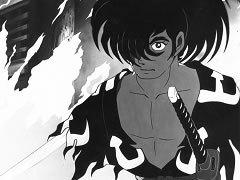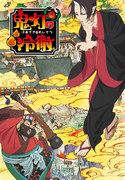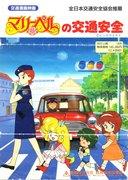Dororo and Hyakkimaru: The appeal and reputation of this classic anime

Dororo and Hyakkimaru - Digging deeper into Osamu Tezuka's masterpiece anime■ Public MediaTV anime series ■ Original MediaAnime Original ■ Broadcast period April 6, 1969 - September 28, 1969 ■Broadcasting stationBroadcast: Fuji Television ■Frequencies23 min ■ Number of EpisodesEpisode 26 ■Original Story・Original work: Osamu Tezuka ■ DirectorDirector: Gisaburo Sugii ■ Production・Produced by Mushi Production ■Works©Tezuka Productions ■ Story The final days of the Muromachi period were a time of chaos. Daigo Kagemitsu, a military commander who aimed to rule the country, proclaimed that in exchange for the fulfillment of his ambition, he would offer his son to 48 demons. The next day, a baby was born to the Daigo family with 48 parts of its body stolen. By Kagemitsu's order, the baby was to be thrown into the river. Fifteen years passed. ■ExplanationDue to the broadcast time and sponsorship, this work was made in black and white to avoid blood-splattering sword fighting scenes. It was produced by a distinguished line-up of directors including Osamu Dezaki of "Ashita no Joe" and Yoshiyuki Tomino of "Mobile Suit Gundam", and character designer Hideaki Kitano. The work was made to appeal to children, with its slashing scenes, dark and harsh worldview, and battles with fate on their shoulders... but after episode 14, the content was revised at the request of the TV station and sponsors, and it became a brighter, more child-oriented work, and Sugii Gizaburo, who showed his skills as general director, stepped down. The animation director, Teruhito Kamiguchi, also left the production to join "Tales of the Thousand and One Nights", which was also being produced around the same time, making it a notorious work. ■ Main staff・Original story: Osamu Tezuka ・Director: Gisaburo Sugii ■ Theme songs and music・TM Dororo and Hyakkimaru - Deep themes and historical backgroundTezuka Osamu's "Dororo and Hyakkimaru" is an anime series that was broadcast in 1969 and is known for its unique worldview and deep themes. The story is set in the late Muromachi period and depicts a baby whose body parts are stolen by 48 demons, and the baby's journey to defeat the demons and get his body back. The adventures of the main character Hyakkimaru and the orphan Dororo who helps him provide many moving and thought-provoking experiences for the viewer. ■ Background and influence of the work"Dororo and Hyakkimaru" was produced based on the original work by Osamu Tezuka, and reflected the social situation and audience needs of the time. In the late 1960s, Japan was in the midst of a period of high economic growth, and saw rapid social change and accompanying turmoil. Against this historical backdrop, Osamu Tezuka attempted to convey a profound message to his audience by depicting human desires, destinies, and hopes. Additionally, the fact that this work was produced in black and white leaves a strong visual impact. The blood-splattering scenes and dark worldview were unusual for children's anime at the time, and made a strong impression on viewers. However, midway through the broadcast, the content was changed to a lighter, more child-friendly version at the request of the television station and sponsors, which led to a major change in the direction of the work. This was a reflection of the media environment and viewer reactions at the time, and can be seen as a symbolic event in the production process of the work. ■Character AnalysisHyakkimaru is born as a baby with parts of his body stolen by 48 demons, but is saved by the doctor Juko. He grows up as a young man with a prosthetic arm and a sword, and goes on a journey to defeat demons and get his body back. Hyakkimaru's character possesses both the strength to fight against fate and the fragility of a human being, evoking deep empathy from viewers. His journey is also a journey of searching for the meaning of his own existence, posing many questions to the viewer. On the other hand, Dororo is an orphan who survives in a turbulent world, and as he accompanies Hyakkimaru on his journey, he is attracted to his strength and his hidden sword. Dororo's character symbolizes purity and courage, and is an important presence that supports Hyakkimaru's journey. His presence eases Hyakkimaru's lonely battle and gives hope to the viewers. ■ Behind the scenes of anime productionMany famous staff members were involved in the production of "Dororo and Hyakkimaru." Director Gisaburo Sugii had a deep understanding of the worldview of the work and succeeded in conveying it to the audience through visual expression. In addition, Osamu Dezaki of "Ashita no Joe" and Yoshiyuki Tomino of "Mobile Suit Gundam" participated in the direction, improving the quality of the work. Hideaki Kitano was involved in the character design, contributing to bringing out the individuality of the characters. However, the production process of the work was not smooth sailing. Due to content revisions midway through the broadcast, Mr. Gisaburo Sugii stepped down, and the animation director Teruhito Kamiguchi also left the production to participate in other works. These events had a major impact on the production of the work, leaving a different impression on viewers. ■Theme song and musicThe theme song for "Dororo and Hyakkimaru", "Dororo no Uta", was written by Yoshitake Suzuki, composed by Isao Tomita, and sung by Yoshiko Fujita. The lyrics and melody of this song reflected the theme of the work, and deeply moved the audience. Music was an important element in further deepening the worldview of the work, and played a role in enhancing the emotions of the audience. ■ Evaluation and influence of the work"Dororo and Hyakkimaru" was highly praised when it was first broadcast, and left a strong impression on viewers. The deep themes and unique worldview of the work provided viewers with much to think about and moved them, reaffirming the talent of Tezuka Osamu. Furthermore, the events that occurred during the production process of the work provided viewers with a different perspective, further enhancing the value of the work. This work had a great influence on later anime production and inspired many creators. In particular, the depiction of characters fighting against their destinies and the dark, harsh worldview were inherited by later works and offered viewers a new perspective. In addition, the events that occurred during the production of this work became an example that helped viewers understand the changes in the media environment and the needs of viewers. ■ Recommendations and related worksFor viewers who enjoyed "Dororo and Hyakkimaru," we also recommend the following works. These works are also based on the original works of Osamu Tezuka, and you can enjoy their deep themes and unique worldviews.
These works inherit the themes and worldview of "Dororo and Hyakkimaru" and offer new perspectives to the audience. These works, which reflect the talent of Osamu Tezuka and the needs of the audience, provide viewers with many emotions and thoughts, reaffirming the value of anime based on Osamu Tezuka's original works. Conclusion"Dororo and Hyakkimaru" is an anime series based on the original work by Osamu Tezuka, and its deep themes and unique worldview left a strong impression on viewers. The events that occurred during the production process of the work provided viewers with a different perspective, further enhancing the value of the work. This work had a great influence on later anime production and inspired many creators. We also recommend viewers to watch works such as "Black Jack," "Astro Boy," and "Jungle Emperor," which are also based on the original work by Osamu Tezuka. These works inherit the themes and worldview of "Dororo and Hyakkimaru" and provide viewers with a new perspective. These works, which reflect Osamu Tezuka's talent and the needs of viewers, provide viewers with many emotions and thoughts, reaffirming the value of anime based on Osamu Tezuka's original work. |
<<: Ninja Kamui Gaiden: A hidden story and a reappraisal of its appeal
Recommend
"Chirururan 2/1" review: A masterpiece that combines history and youth
"Chirururan 2/1" - The appeal of this s...
The latest trailer for the new series "Kamen Rider Black Sun" will be released this fall
The latest work in the classic special effects se...
Weathering With You received positive reviews that exceeded expectations and was shortlisted for the Toronto International Film Festival Grand Prix
The new animated film Weathering with You, by Mak...
The Hunger Games will have a prequel film set 64 years before the original trilogy
According to foreign media reports recently, a pr...
DC's Doom Patrol Season 4 trailer to premiere on December 8
Today (October 10), HBO Max released the trailer ...
A thorough analysis of the charms of freezing and the heart-pounding troubles! Experience the excitement of freezing♥
All-round evaluation and recommendation of "...
The new Transformers film received $200 million in investment and is expected to be released on June 24, 2022
According to the Canadian news website Journal de...
Director agrees with fans' speculation that Amy Rose may appear in Sonic the Hedgehog 3
As the latest work in the successful game-adapted...
The new character design art of the TV animation "Jujutsu Kaisen" adapted from the comic is released
The animated version of the popular manga "J...
The appeal and reviews of "Dolphin Prince": A thorough explanation of the moving ocean adventure anime
Dolphin Prince - A tale of sea adventure and frie...
A thorough review of the new version of Candy Candy! Is it possible to rediscover the excitement?
The appeal and reviews of "Candy Candy [New]...
Fresh and beautiful! "Re:Zero" popular character Rem's new Chinese clothing is available for hand-made
Today, April 5th, the new Hanfu costume of Rem, a...
Mobile Suit Gundam Twilight AXIS review: A new perspective on Gundam
"Mobile Suit Gundam Twilight AXIS" - A ...
The famous work "World Trigger" will be suspended due to the author's illness and will resume on March 3
Due to the nature of their work, Japanese cartoon...
Netflix animation "Thermae Roma" OP theme song new trailer will be released on March 28
Netflix's famous high school animation "...









